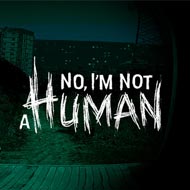

No, I’m not a Human is an eerie, choice-driven game set in a shattered world where humanity is on the brink of collapse. Every knock on your door is a potential death sentence — or a chance to save a life. Trust is a fragile thing when Visitors hide behind convincing masks. You must figure out who’s real and who’s dangerous before deciding who to let inside your shelter.
In No, I’m not a Human, the sense of isolation is palpable. You spend your days barricaded inside, listening for the knock that breaks the silence. Every Visitor who appears on your doorstep has a story — but their words can’t always be trusted. Some are genuine survivors. Others mimic humanity just a little too perfectly. It’s up to you to look beyond their pleas, catch small details they cannot hide, and make the hard decisions that determine who lives and who must go.
This game is all about careful observation and choice-making:
The brilliance of No, I’m not a Human lies in its subtle use of hints and deception. Every encounter is laced with tiny clues — a quiver in the voice, an ill-fitting jacket, or a backstory that doesn’t add up. At the same time, the game throws in false flags and misdirection to keep you doubting your own conclusions. Nothing is ever as straightforward as it seems.
Examples of signs to look for include:
With each knock, you grow more adept at spotting lies — or more uncertain of the truth. Every Visitor is procedurally generated, making sure that no two playthroughs ever feel quite the same. Familiar patterns emerge, only to change and evolve as you progress. Your paranoia is always one step behind.
No, I’m not a Human never lets you make choices lightly. The game is built on difficult dilemmas that stick with you. Every guest you admit could hide a Visitor waiting to strike. Every one you turn away might be a human desperate for safety. There is no undo, and there is no going back. Your judgment — sound or flawed — shapes the story as it unfolds.
Key features driving these tense decisions:
This is not a game of guns and speed. It’s a game of careful thought, fear, and instinct. No, I’m not a Human captures what it feels like to look into someone’s eyes and wonder if you’re about to make a fatal mistake. It’s a challenge that gets under your skin because it could all happen — if the world truly ended and you had nowhere left to hide.
Each knock brings a new face, a new voice, and a new set of risks. And the most terrifying part? Even after you choose, you’ll never truly know if you were right.